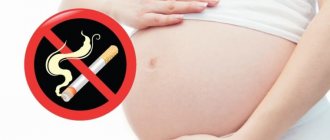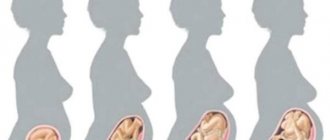A cycle of 28 days is considered normal, with the onset of ovulation on the 14th. But the norm is different for each person and the time of ovulation may shift. For some - on the 18th, for others - on the 20th or 21st day from the beginning of the cycle.
Whether ovulation took place, at what time it happened, how the woman’s condition and mood changes, what to do to conceive or to prevent it - all knowledge of her body will help a woman to be independent and free.
What secrets are hidden behind the concept of ovulation?
The cycle begins on the first day of menstruation - many people know this, but not all. Not every woman understands that ovulation of an egg is not a momentary release of troops. Everything happens much more slowly and gradually, which is why it is called the ovulation period.
A cycle of 28 days is considered normal, with the onset of ovulation on the 14th. But the norm is different for each person and the time of ovulation may shift. For some - on the 18th day, for others - on the 20th or 21st day.
During this period of time, the egg leaves the ovaries and moves through the fallopian tubes. A nimble sperm is able to get even there - its weight is very small and its speed is high.
Misconception is dangerous! The rhythms of the female body are unpredictable. Even for one woman, cycles can change in duration, and ovulation can shift either a few days earlier than this date or to later days. Ovulation on days 18, 20 and even 21 is also possible.
Taking the 28-day menstrual cycle as a solid norm, the middle of it is considered to be the time of ovulation. This is how the myth about the 14th day developed. What about irregular periods? With cycles of 30, 32 days or more, ovulation can be expected on the 18th and 20th day from the start of the cycle.
The doctor should tell you how to determine this period and whether it can be felt. Some women can clearly name the day when ovulation took place. Late ovulation can be both a gynecological problem and the norm for an individual female body.
Understanding the significance of the timing of ovulation gives a woman the opportunity to protect herself from an unwanted pregnancy, or, conversely, to plan and fulfill the dream of her long-awaited child.
Phase characteristics
By the end of menstruation, the next phase begins - the estrogen phase. At this time, increased levels of estrogen and follicle-stimulating hormone are detected. FSH is involved in the formation of a dominant follicle. In its cavity there is an egg. It will ripen within a few days. The average duration of these phases can be 12 days. In rare cases, follicle maturation occurs on the tenth day.
FSH and estrogen are replaced by luteinizing hormone. It increases the volume of fluid present in the follicle. Its shell cannot withstand the pressure and ruptures. This is the beginning of ovulation. The lifespan of an egg can be 24 hours. During this time, she needs to meet the sperm and form a zygote. If this does not happen, the egg quickly dies.
After this, the final stage of the cycle begins - the progesterone stage. Progesterone helps the egg to attach tightly to the endometrium. After the formation of the zygote, progesterone participates in its nutrition. In the absence of pregnancy, progesterone levels decrease. The next menstrual cycle begins.
Unplanned pregnancy: why?
Modern people must have natural control over the ability to give birth or protect themselves from this in life. But why do unplanned pregnancies still occur so much more often?
Let's name the reasons:
- Two did not use controlled methods of contraception because the pleasure of intimacy overwhelmed the mind;
- They did not yet know anything about such a possibility and the happy moment overshadowed even the slightest fear;
- The couple is familiar with all methods of contraception, but does not consider them acceptable;
- One or both know and use control methods, but they do not work in a particular period.
Bad luck - many will say. No, this is a lack of certain knowledge on the part of the woman. The desire to become pregnant or to protect yourself from this should force a woman to track ovulation. With long cycles, it occurs 18, 20, 21 days from the start of menstruation.
When a woman clearly understands which days from the beginning of the cycle pregnancy is most likely to occur, she will take all measures for protection. The time of ovulation, no matter what day it occurs, is the most dangerous period for an unwanted pregnancy. If intimacy occurred on the 18th, 20th or 21st day of the cycle and coincided with the ovulation period, conception is 100% possible. And abstinence or protection from days 10 to 17 will be useless.
If you get pregnant a week before your period, will you still get your period?
Fertilization is possible no earlier than 12-16 days before the expected date of menstruation. If you are expecting your next period based on the calendar method, and not on the day of your ovulation, this is not entirely correct, since this method does not take into account spontaneous cycle failures (the egg will be released earlier or later than usual).
When open contact occurred a week before the expected start date of menstruation - and during this period the egg was released, then automatically the 1st day of the new cycle (beginning of the delay) moves forward by about 14 days. At least for those who have normal hormones.
This means that you definitely won’t have your period a week after ovulation and PA . If scanty discharge begins, then this is not menstruation, but possible implantation bleeding. Usually occurs 7-10 days after ovulation.
Important(!) During pregnancy, real periods do not occur in most cases. Only a small and short-lived daub. Sometimes this happens during a completely normally developing pregnancy.
If, 2 weeks after confirmed ovulation, spotting (not menstruation) begins and the tests show a positive result, you should consult a doctor just in case. When the real, your normal, periods began, most likely the pregnancy failed.
When to do a hCG test if conception occurred a week before your expected period
The first ultrasensitive (10) pregnancy test can be done as early as 7-8 days after ovulation and expected conception.
HCG appears in the urine only after implantation of the embryo, and this happens about a week and a half after fertilization. This means that at 7-10 DPO the hCG test may already show a second weak line.
In order to learn to notice the first early signs of pregnancy, I recommend reading this article.
Do you know this secret?
We hope that the reader is educated, but for inexperienced young people we will reveal one more secret: sperm activity does not last for 3 days, as is commonly thought. In the presence of good quality cervical fluid, sperm viability is extended up to 5 days. So consider when and how you should beware and take action.
If this period of sperm vital activity coincides with the period of ovulation, no matter on the 20th day of the cycle or on the 18th, 21st, then fertilization of the mature egg will occur without your participation. Be carefull. This option is possible.
The statement that a woman cannot become pregnant during her menstrual period is equally incorrect. If its duration is not 3 days, but more, you will have to use protection. This is why disbelief in contraceptives arises if they are used at the wrong time. Married couples, if they clearly understand the physiological changes in a woman’s body and together monitor cycles and ovulation dates, successfully plan the birth of children and themselves determine the time for their birth.
Signs and symptoms associated with double ovulation
Signs of ovulation
In theory, symptoms are recognized in two ways:
- During one cycle, the ovulation test will be positive if it is repeated.
- Pain in the ovaries.
Scientists have determined that up to 30% of the fair sex feel when an egg is released. Characteristic features are:
- High sex drive.
- The mucus produced by the cervical canal of the uterus increases.
- The mammary glands become more sensitive, and swelling of the glands often occurs.
- Discharge of small bloody streaks from the genital tract. It is worth noting that there should not be a lot of discharge, but if this is not the case, it is recommended to consult a gynecologist.
It's actually important
One day, suddenly, a young woman feels a slippery wet transparent discharge between her legs, but does not see anything red on the pad.
Secretions similar to “egg white” indicate approaching ovulation. Many ladies feel this phenomenon, but only a few attach importance to them and understand the manifestations of their body. And this is evidence of the readiness of a young female body for fertilization. Ovulation Herald - please love and favor. And this happens on the 13th, 14th, or even 18th, 20th, 21st day of the cycle.
Complete control over the body, understanding oneself, the situation, and participation in protecting one’s health is possible thanks to drawing up schedules. Daily control measurements are carried out at the same hours. It takes no more than 2 minutes to compile them, but the graphs allow you to recognize your body and the physiological processes taking place in it.
If an educated mother teaches her growing daughter to do all this and uses her example to show her the rules for charting basal temperature, the woman’s future health will be in her hands.
A clear understanding that ovulation occurred on the 18th, 20th, 21st day or any other day of the cycle will help plan the birth of a child at a time when the woman is mentally, financially and physically ready for such a responsible act. This is a whole philosophy: sexual manifestations, the birth of children, a woman’s menopause, and graphs of menstruation and ovulation cycles are pages of knowledge of this science.
Whether ovulation took place, at what time it happened, how the woman’s condition and mood changes, what to do to conceive or to prevent it - all knowledge of her body will help a woman to be independent and free.
All this concerns mainly marital relations of a couple or a permanent partner in sexual relations. Only in this case, tracking the timing of ovulation is of particular importance.
Ovulation on the 18th, 20th, 21st or any other day after the start of the cycle can occur, this is not what you should be afraid of. Her absence should worry the young woman much more. If a woman has a sexual life with different partners, the charts will help, but she will have to protect herself from unwanted pregnancy and possible genital problems only with the help of a condom. Don't forget about hepatitis, AIDS, sexually transmitted and simply fungal infections.
Take care of yourself and consult with specialists.
Home methods for determining favorable days
With a 26-day cycle, the onset of ovulation can be determined in various ways. A woman can install it at home. To do this, you can use the following methods:
- building a temperature graph;
- study of external signs;
- testing;
- microscopic analysis.
The most accurate method for independently determining ovulation is to construct a temperature graph. A woman's basal temperature depends on her hormonal levels. Under the influence of a luteinizing substance, the temperature decreases. Progesterone causes an increase in indicators.
To build a table correctly, you need to use several rules. It is recommended to take measurements in the morning. After sleep, temperature readings stabilize. To avoid getting an erroneous result, a woman should not make any movements. You should also use a mercury thermometer. This thermometer shows accurate results within 5 minutes. Using an electronic thermometer may result in erroneous graphing. This happens due to the nature of their work. The electronic thermometer continues to measure after the signal to stop operation is given. A mercury thermometer stops measuring after 5 minutes.
The thermometer should be kept close to the bed. This will reduce physical activity. It is also recommended to avoid sexual contact in the morning. It will change your body temperature. The schedule will be wrong. Each result is recorded in a special chart. Connecting the dots allows you to build a basal temperature graph.
How many days does it take to get your period after ovulation?
If everything is in order with hormones, then menstruation ALWAYS begins 12-16 days after ovulation. The average length of the corpus luteum phase is 14 days.
This is interesting(!) Almost all online calculators use the average length of phase II. But in practice, this number may differ for different women, so an error in the date of ovulation is possible. Hence the conclusion - you should not rely entirely on a ready-made calculator; it is better to calculate your individual length of the second phase once.
For example, if the cycle is 30 days, and the duration of the luteal phase is 15 days or 12 days, then the ovulation date will be:
30-15=15th DC, or 30-12=18th DC
And the online calculator will give the result: ovulation will occur on the 16th DC.









